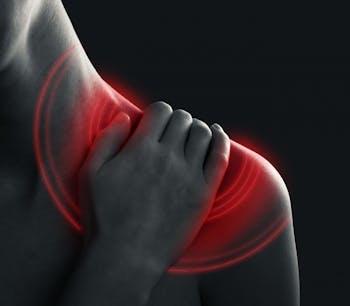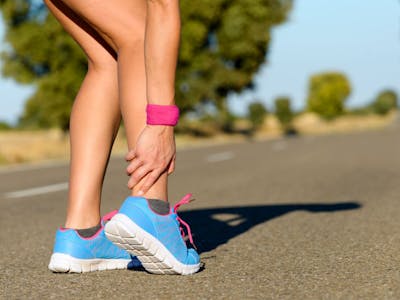-
Pain
Chronic pain is pain that lasts more than several months (variously defined as 3 to 6 months, but certainly longer than "normal healing"). It's a very common problem. Recent clinical studies suggest the following:
- About 25.3 million U.S. adults (11.2 percent) had pain every day for the previous 3 months.
- Nearly 40 million adults (17.6 percent) had severe pain.
- Individuals with severe pain had worse health, used more health care, and had more disability than those with less severe pain.
What Types of Conditions Sometimes Result in Chronic Pain?
People can suffer with chronic pain in a number of areas of the body. We commonly treat patients that have chronic pain in the follow areas:
- Headaches caused by postural syndromes and work-related activities
- Neck pain caused by car accidents, postural syndromes, work-related activity
- Lower back pain caused by car accidents, lifting injuries, slip-and-falls
- Hip pain as a result of osteoarthritis or injury
- Knee pain as a result of osteoarthritis and sports injuries
Problems Associated with Chronic Pain
Patients that are experiencing chronic pain often have some or all of the following:
- Fear of performing daily activities
- Tightness and stiffness
- Increased use of pain pills
- New or worsening conditions
- Circulation problems
How Physical Therapy Can Help
Emotions, depression, anxiety, nervous system hypersensitivity, tissue damage, and pain caused in the brain are all components of chronic pain that have been successfully addressed by:
- Patient education - physical therapists help chronic pain patients understand that chronic pain is complex involving more than damaged muscles, tendons, ligaments, and joint tissues.
- Hands-on treatment - soft tissue and spinal manipulative techniques are often effective to help decrease pain and increase mobility.
- Graded exercise programs - improving your strength and endurance can make it easier to move around during the day. Consider daily activities like getting out of a chair or a car, climbing stairs, or walking long distances. These are daily activities that graded exercise programs, provided by a physical therapist, can help with.
- Posture and body mechanics instructions - understanding how to properly lift, sit, bend, reach, and perform specific daily activities can help. Moreover, progressively recovering normal movements through stretching and strengthening can assist in the return to normal daily activities.
If you suffer with chronic pain, give us a call to learn how we can help you out.
-
Sprains/ Strains
The terms sprain and strain are typically used interchangeably to describe common musculoskeletal injuries that occur around the joints as a result of a variety of activities. Common causes include improper lifting techniques, repetitive movements at work, home or school and traumatic injuries (e.g., abrupt falls with twisting or pivoting movements, etc.).
Sprain/Strain Symptoms
The common symptoms of sprains and strains are similar, which is how they are so easily confused.
Sprain
- Bruising
- Pain around the injured joint
- Edema (swelling)
- Limited flexibility and range of motion due to pain
Strain
- Muscle spasms
- Pain around the injured joint
- Edema (swelling)
- Limited flexibility and range of motion due to pain
The major difference with the symptoms is that there is bruising around the injured joint on a sprain, and with a strain, muscle spasms occur.
Sprains and Strains Are Different Injuries
A sprain is an overstretching or tearing of one or more ligaments. Ligaments are crisscross bands of fibrous tissue that connect bones together and stabilize joints.
Sprains are classifed as:
- Grade 1 (mild): slight overstretching and a little damage to the ligament fibers.
- Grade 2 (moderate): partial tearing of the ligament with abnormal looseness (laxity) in the joint when moved in certain ways.
- Grade 3 (severe): Complete ligament tear, which causes severe instability and makes the joint nonfunctional.
A strain is an overstretch or tear to a muscle or tendon. Tendons are dense fibrous connective cords of tissue that attach muscles to bones or structures and initiate movement.
Treatment for Sprains and Strains
Directly after a sprain or strain, control the swelling with RICE for 24 to 48 hours:
- Rest the injured joint/extremity and use a sling for an arm or shoulder injury or crutches for a leg or foot injury.
- Ice for 20 minutes every hour.
- Compress with an elastic Ace bandage or brace for an ankle or knee, a splint for an injured finger or buddy-taping for an injured toe.
- Elevate above the heart, if possible.
An over-the-counter NSAID (non-steroidal anti-inflammatory drug) (such as Tylenol and or Motrin) may help with reducing the swelling and pain/ pressure relief. After this home treatment, be sure to have the injury evaluated by your doctor to rule out a fracture or a severe sprain or strain.
Most mild sprains and strains heal with a few days to a week. Seeing a physical therapist can also help you regain range of motion. Your physical therapist can also show you injury prevention techniques to help prevent future sprains and strains.
If your symptoms don't improve within a couple of days, or you experience any of the following, see your doctor to have it immediately evaluated:
- An audible "popping" sound with the injury
- Pain and swelling tha gets worse over time
- Fever or chills
- Difficulty standing or walking without pain
- Limited flexibility and range of movement around the injured joint
- Numbness or tingling
- Joint/extremity deformity or signs of instability
Moderate sprains and strains may require bracing for a period of time, followed by physical therapy to help regain normal function and range of motion. Severe sprains and strains may require surgery to repair the tear, followed by physical therapy to rehabilitate the injury.
Terrapin Physical Therapy
5 Harris Ct, Building T #102
Monterey, CA 93940
Monterey, CA 93940
(831) 372-3579



